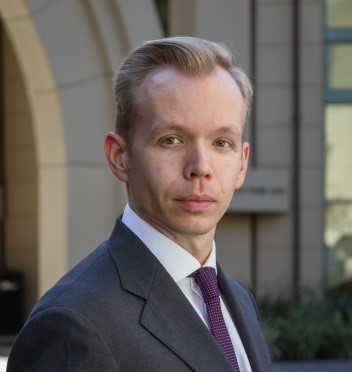Hungarian terminal in Trieste might start operations in 2026

The Hungarian government has planned the construction of a multi-purpose terminal at the port of Trieste, in northeastern Italy. RailFreight.com had a chat with Peter Garai, CEO of Adria Port. The company, which shares its name with the terminal, is owned by the Hungarian government and will manage the facility. Garai pointed out that partial operations could start by 2026.
As Garai explained: “Landlocked Hungary has been looking for an outlet on the sea for quite some time”. The Adriatic Sea was identified as the best option to find one. He mentioned that a first attempt was made with the port of Koper. However, after these negotiations did not yield the hoped results, Trieste was selected since it proved to be “the best opportunity and most investor-friendly option”, as Garai specified.

The Adria Port terminal
The project was unveiled last October. The terminal will cover a surface area of 32 hectares. The facility will be located in the port area formerly used by the Aquila refinery, which has been unutilised since the facility closed in the 1980s. From there, the rail infrastructure is connected to the main national network through the Trieste Aquilinia station. The station is undergoing renovation with the opening of four tracks to accommodate 750-metre freight trains.
Garai added that Adria Port, which was established for the project became the owner of 26 hectares of private lands, while the remaining six, which include the shore, are provided by Italy as state concessions. The plan is to have a multi-purpose terminal that can serve container traffic, general cargo, and Ro-Ro traffic. “The emphasis will be on rail transport”, Garai stated. This especially true considering that Trieste is a key location for two TEN-T Corridors, the Mediterranean and the Baltic-Adriatic.
Around 200 million euros in investments and infinite possibilities
The investment from the Hungarian government will be somewhere between 150 and 180 million euros. An additional 45 million euros are injected by the Port Authority of the Eastern Adriatic Sea, which manages the port of Trieste. Other than for the construction of the terminal, the funds are currently being deployed for the partial quaying of the Noghere terminal, dredging the waterway, and creating a connection to the main road network.
Moreover, Garai pointed out that Adria Port is open to various possibilities, including the option of transporting non-cranable semi-trailers. The port of Trieste, for example, implemented the VEGA’s roadrailLink (r2L) connector last October. On the topic of the terminal within the context of the Silk Road, Garai said that “where cargo comes from it all depends on the market and its demands”, he concluded.
Also read:
- New Italy-Serbia rail corridor could serve as Ukraine bypass
- Ban on Ukrainian grain imports remains despite EU’s decision
- Could investments in Hungary twist China-Europe connections?
You just read one of our premium articles free of charge
Want full access? Take advantage of our exclusive offer




